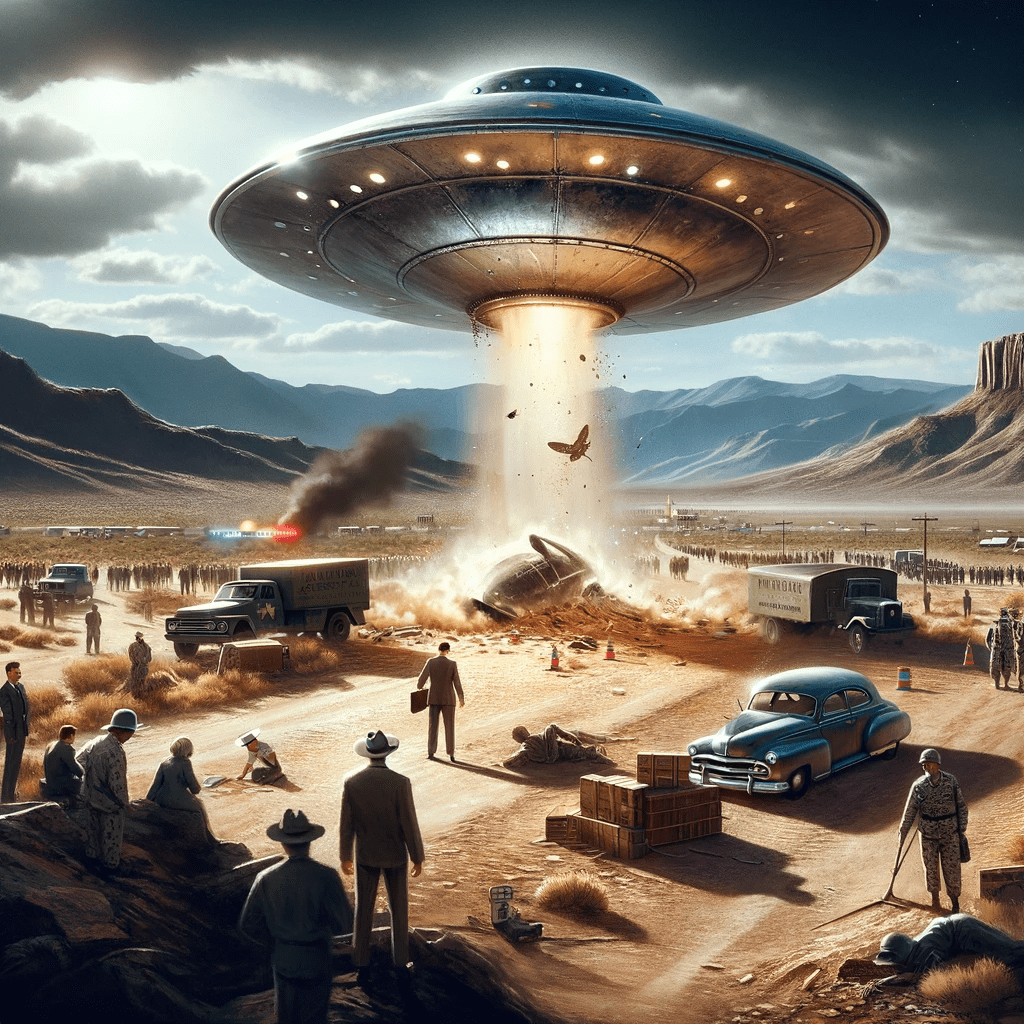The Kingman UFO Crash (1953)

The Kingman UFO Crash is a well-known event in the UFO community that allegedly occurred in May 1953 near Kingman, Arizona, in the United States. According to various accounts, a large, silver disc-shaped object crashed into the desert, leaving behind a trail of smoke and debris. The incident has been the subject of ongoing speculation and investigation, with some claiming that it was an extraterrestrial event, while others suggest that it may have been a military aircraft or some other type of secret project.
One of the key claims made about the Kingman UFO crash is that witnesses reported seeing a large, silver disc-shaped object crash into the desert near Kingman. According to some accounts, the object was roughly 30 to 40 feet in diameter and left a trail of smoke and debris as it crashed. It is also claimed that the incident was witnessed by a number of people, including civilians, military personnel, and law enforcement officers. Some witnesses reported seeing military vehicles and personnel responding to the crash site, while others claimed that the area was quickly sealed off and kept under tight security.
One of the most well-known books on the subject of the Kingman UFO crash is “The Kingman UFO Story” by James W. Moseley and Karl T. Pflock. The book explores the various accounts and theories surrounding the incident and offers a detailed analysis of the available evidence. Another book on the subject is “The Aztec UFO Incident” by Scott and Suzanne Ramsey, which suggests that the Kingman crash was related to another well-known incident in which a purported UFO crashed in Aztec, New Mexico in 1948.
Some suggest that the incident was covered up by the government and that the recovered debris was taken to a secret facility for analysis.
One of the key figures involved in the Kingman UFO crash was a man named Arthur Stansel, who was reportedly the first person to arrive at the crash site. Stansel was a civilian who lived near the crash site and claimed to have seen the object as it descended and crashed into the desert. Another key figure was a man named Frank Scully, who was a well-known writer and journalist who published a book in 1950 called “Behind the Flying Saucers”. In the book, Scully claimed to have uncovered information about a purported UFO crash in Aztec, New Mexico, and some have suggested that the Kingman incident may have been related to that event.
Another notable mentions of the Kingman incident came from a man named Raymond E. Fowler in 1973. Fowler had interviewed a man who used the pseudonym “Fritz Werner,” who claimed he was part of a military recovery operation for a crashed UFO near Kingman in 1953. However, this claim came 20 years after the alleged incident, and “Werner” was only one source, limiting the ability to verify the story.
The Kingman UFO Crash, along with the incidents at Roswell and Aztec, form a triad of discussed and debated alleged UFO crashes. These incidents, while separate and distinct, share several commonalities that have drawn the attention of ufologists.
The Roswell Incident occurred in the summer of 1947 near Roswell, New Mexico. In stark contrast to Kingman, news about the Roswell crash spread almost immediately, leading to a swift response by the military. The U.S. government initially announced they had recovered a “flying disc,” but soon retracted this statement, claiming it was a weather balloon instead. This retraction, combined with persistent rumors of alien bodies and UFO debris, has made Roswell arguably the most famous UFO incident in history.
Just a few months after Roswell, in March 1948, the purported Aztec, New Mexico crash took place. Much like the Kingman incident, reports about the Aztec crash didn’t surface until years later, mainly due to the claims presented in Frank Scully’s 1950 book “Behind the Flying Saucers.”
Finally, the alleged Kingman UFO Crash took place in May 1953, near Kingman, Arizona. As with the Aztec incident, most of the claims about Kingman didn’t emerge until decades later. Each of these incidents, while occurring in relatively close geographical proximity within the southwestern United States, unfolded differently according to various accounts.

